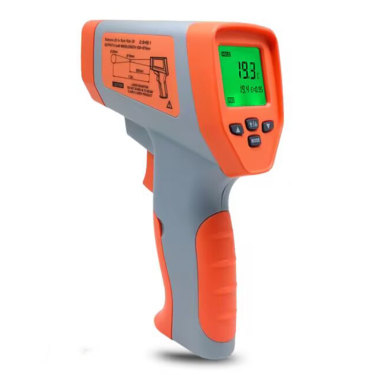
# How to Use a Cooking Thermometer for Perfectly Cooked Meals
## Introduction
A cooking thermometer is an essential tool for any home cook or professional chef. It ensures your meats, poultry, and other dishes reach the perfect internal temperature for both safety and optimal flavor. In this guide, we’ll walk you through everything you need to know about using a cooking thermometer effectively.
## Types of Cooking Thermometers
Before we dive into usage, let’s look at the different types available:
Instant-Read Thermometers
These provide quick temperature readings (usually within 2-5 seconds) and are perfect for checking doneness at the end of cooking.
Oven-Safe Thermometers
Designed to remain in the food while it cooks in the oven, these are great for roasts and whole poultry.
Probe Thermometers
These feature a probe that stays in the food with a cord connecting to a digital display outside the oven.
Infrared Thermometers
These measure surface temperatures without touching the food, ideal for grills and pans.
## How to Use a Cooking Thermometer Properly
1. Choose the Right Thermometer for the Job
Select a thermometer based on what you’re cooking. Instant-read works well for steaks, while probe thermometers are better for large roasts.
2. Insert the Thermometer Correctly
For meats, insert the probe into the thickest part, avoiding bones and fat. For poultry, check the thigh and breast separately.
3. Know Your Target Temperatures
Here are some key temperatures to remember:
- Beef, lamb, veal (medium-rare): 145°F (63°C)
- Poultry: 165°F (74°C)
- Pork: 145°F (63°C)
- Fish: 145°F (63°C)
4. Clean Your Thermometer Properly
Always wash the probe with hot, soapy water after each use to prevent cross-contamination.
## Common Mistakes to Avoid
Not Calibrating Your Thermometer
Regular calibration ensures accuracy. Test in ice water (should read 32°F/0°C) or boiling water (212°F/100°C at sea level).
Checking Temperature Too Early
Frequent checking can cause heat loss and uneven cooking. Wait until near the estimated cooking time.
Not Allowing for Carryover Cooking
Meat continues to cook after removal from heat. Remove beef and pork at 5°F below target, poultry at 160°F.
Keyword: cooking thermometer
## Advanced Tips for Perfect Results
Using a Thermometer for Baking
Check bread (190-210°F), custards (170-175°F), and cheesecakes (150°F) for perfect doneness.
Monitoring Oil Temperature
Use a high-temperature thermometer to maintain ideal frying temps (usually 350-375°F).
Testing Multiple Spots
For large cuts, check several areas to ensure even cooking throughout.
## Conclusion
Mastering your cooking thermometer will transform your culinary results, ensuring perfectly cooked, safe meals every time. With practice, you’ll develop an instinct for when